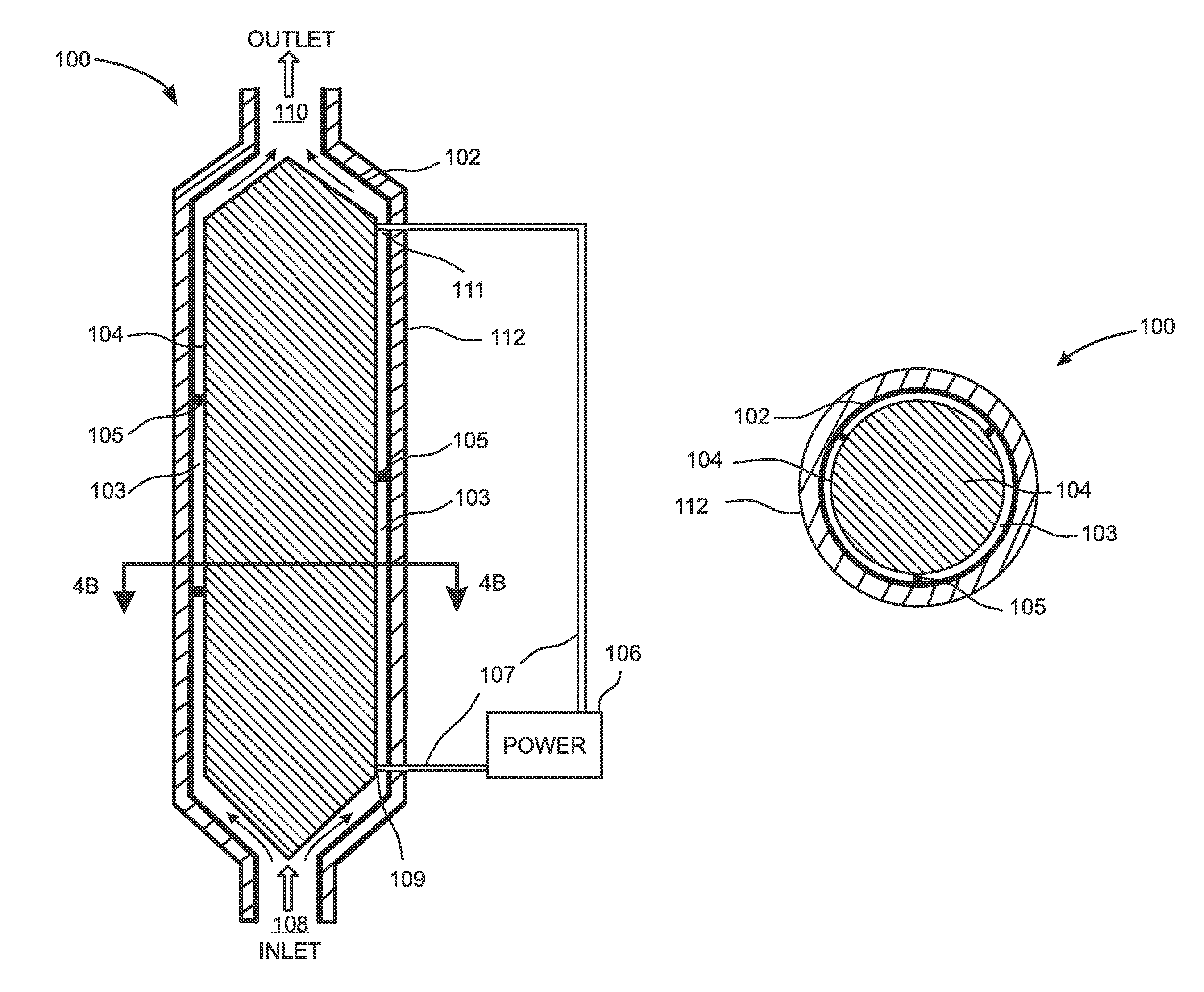Tankless electric water heater with efficient thermal transfer
a efficient technology, applied in the field of tankless electric water heaters, can solve the problems of high cost, large tank-based water heaters, waste of energy and money, etc., and achieve the effects of low back pressure, high energy efficiency and simple design
- Summary
- Abstract
- Description
- Claims
- Application Information
AI Technical Summary
Benefits of technology
Problems solved by technology
Method used
Image
Examples
embodiment 200
[0051]FIG. 2 illustrates a preferred embodiment 200 of the present invention that differs from the embodiment of FIG. 1A in that it has an overall U-shape, instead of the straight tubular shape 102 of FIG. 1A. However, the container 202 and heating element 204 contained therein are otherwise similar to the embodiment of FIG. 1A. The U-shaped configuration allows for a lengthier water passage 203 between the inlet 206 and the outlet 208 to be contained within a smaller space, thereby providing increased heat transfer to the fluid from the heating element 204 and a corresponding increase in the fluid heating rate. The U-shape of this embodiment also allows for shorter power conducting leads 210 that connect the heating element connectors 109, 111 to the power supply 212, since the two ends of the heating element 204 are positioned generally nearer to each other than in the case of a straight, tubular configuration such as is illustrated in FIG. 1A and FIG. 1B.
[0052]In the embodiment o...
embodiment 300
[0054]FIG. 3 illustrates another preferred embodiment 300 of the present invention that differs from the embodiments of FIG. 1A and FIG. 2 in that it has a general overall shape of a coil or spiral. However, the container 302 and the heating element contained therein 304 are otherwise similar to the embodiments of FIG. 1A and FIG. 2. The coil configuration of this embodiment 300 provides for a lengthier fluid passage 303 within a compact space, thereby increasing the heating capacity while occupying less space in the overall plumbing system. A power source 306 is connected by leads 307 to the heating element connectors 109, 111, which are located near each other, thereby minimizing the required lengths of the leads 307.
[0055]For simplicity of illustration, thermal insulation is not shown in FIG. 3 as surrounding the container 302. However, it will be understood that thermal insulation is included in some preferred embodiments that are otherwise identical to the embodiment of FIG. 3....
PUM
 Login to View More
Login to View More Abstract
Description
Claims
Application Information
 Login to View More
Login to View More - R&D
- Intellectual Property
- Life Sciences
- Materials
- Tech Scout
- Unparalleled Data Quality
- Higher Quality Content
- 60% Fewer Hallucinations
Browse by: Latest US Patents, China's latest patents, Technical Efficacy Thesaurus, Application Domain, Technology Topic, Popular Technical Reports.
© 2025 PatSnap. All rights reserved.Legal|Privacy policy|Modern Slavery Act Transparency Statement|Sitemap|About US| Contact US: help@patsnap.com



